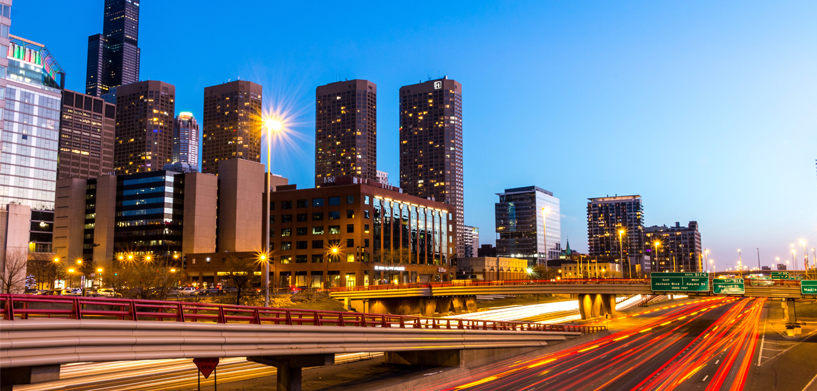As part of the Federal Aid Highway Act of 1956, then-President Dwight D. Eisenhower essentially created our nation’s interstate highway system, which transformed how buses, automobiles and trucks move about the United States.
The 47,000-mile long Interstate System has done everything from spawning the creation of the suburbs to revolutionizing shipping and decentralizing manufacturing, and much more. Fast-forward to today and U.S. transportation systems continue to be the lifeblood of our country’s economy. They enhance the quality of life for citizens – and are still a major national priority.
For example, U.S. President Biden recently unveiled a $2 trillion post-pandemic economic recovery package, which includes $621 billion for transportation infrastructure such as bridges, roads, public transit, ports, airports and electric vehicle development.
The new infrastructure package is as a significant boost to U.S. transportation – that’s why now’s an ideal time to examine why transportation investments are worth it.
Fueling Economic Growth
In North America alone, the economy depends on trucks to deliver nearly 70 percent of all annually transported freight in the U.S. and Canada. This accounts for $671 billion worth of manufactured and retail goods transported by trucks in the U.S., as well as another $295 billion in trade with Canada. Even during the early days of the pandemic, the ability to move goods to consumers was a critical part of keeping our economy moving forward.
Enhancing Citizen Safety
In addition to ensuring that critical infrastructure is repaired, transportation investments will go a long way in enhancing overall citizen safety. In fact, a 2019 American Road & Transportation Builders Association (ARTBA) report found that 47,052 of America’s 616,087 bridges were rated structurally deficient and need urgent repairs.
Also, the U.S. National Safety Council estimated that 38,800 people lost their lives to car crashes, and an additional 4.4 million people were injured seriously enough to require medical attention in 2019. Due to the rise in distracted driving and more SUVs on the road, bicyclist and pedestrian deaths are also at the highest level in nearly 30 years.
Connecting Our Communities
Today’s transportation systems play a vital role in connecting citizens to their jobs, schools and loved ones. The ability to move freely and safely around the U.S. has always been the foundational element of our economy and societal wellbeing. It also enhances economic mobility for all socio-economic levels.
Helping the Environment
We are on the forefront of a transportation revolution where environmental sustainability policies are now coming into play, and resulting in the electrification of transportation fleets in an effort to embrace zero emissions.
In addition, it is expected that by 2030, sustainable transportation options like cycling will overtake car usage in the world’s biggest cities. It is also believed that the sharing economy, an uptake of autonomous vehicles and an aging global population would reduce the need for car ownership overall. This presents a prime opportunity for green transportation investments that will meet new citizen expectations, and help to reduce overall carbon emissions.
Bringing It All Together with Innovation
In order to fully maximize all infrastructure investments, cutting-edge innovations will lay the foundation for a new transportation frontier that is safer, more effective, and better for the environment.
While there are transportation safety policies and awareness campaigns around distracted driving, technology will also play a greater role in the overall engineering of roadways to improve the travel experience for drivers, bicyclists and pedestrians.
For example, Hexagon’s Geospatial division offers a wide range of transportation solutions that optimize safety, improve planning, and streamline operations for air, maritime, rail, and road transportation. We offer transportation safety engineers and analysts an end-to-end solution for data ingestion, analysis, and reporting to reduce traffic fatalities and improve road safety.
Our location intelligence and geospatial software also helps to map and locate assets, as well as model road networks for better information management and planning. It is also possible to operate and maintain networks, and infrastructure, from the office to the field, including permitting and routing over-dimensional freight.
It is clear that new transportation investments will pay dividends in economic growth, citizen safety and environmental sustainability. By taking advantage of the right innovations, it is possible to bring these investments to life in highly transformative ways.
Learn more about Hexagon’s transportation solutions.
















